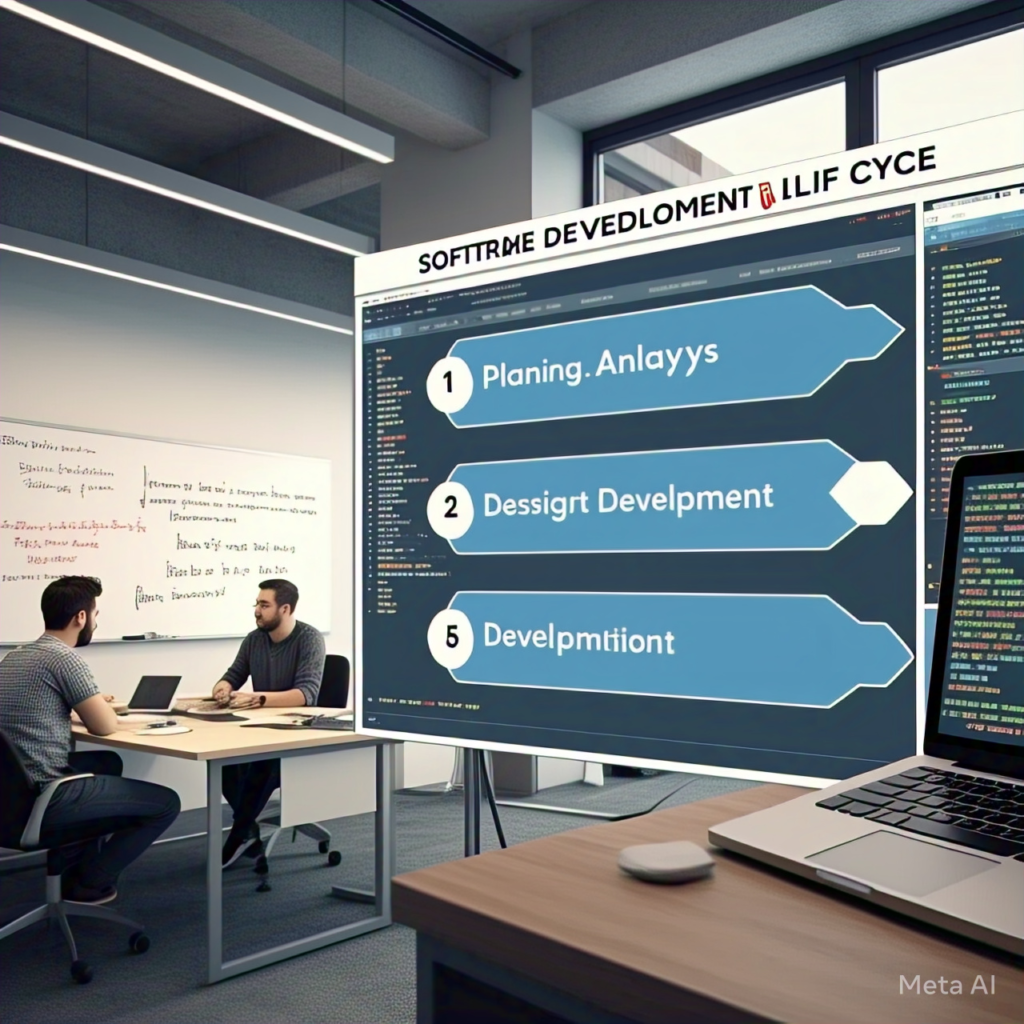
Software development is a complex and iterative process that requires structured planning, execution, and maintenance. A well-designed Software Development Life Cycle (SDLC) is the key to ensuring efficiency, effectiveness, and high-quality software delivery. By following a well-defined SDLC, teams can avoid common pitfalls such as project delays, cost overruns, and software failures.
Understanding the Software Development Life Cycle (SDLC)
SDLC is a systematic approach to software development that breaks down the process into distinct phases. Each phase has specific deliverables and objectives, ensuring a smooth workflow and reducing risks. The primary phases of SDLC include planning, requirement analysis, design, development, testing, deployment, and maintenance.
Why is a Well-Designed SDLC Important?
A properly structured SDLC provides a framework for teams to follow, ensuring that software development is organized, predictable, and manageable. Here are some key reasons why a well-planned SDLC is essential:
1. Improved Project Management
With a clearly defined SDLC, software development teams can set realistic goals, allocate resources efficiently, and manage timelines effectively. Project managers can track progress and mitigate risks early, ensuring that the project stays on track.
2. Higher Quality Software
A structured SDLC emphasizes quality assurance at every phase. Through thorough testing, validation, and reviews, developers can identify and resolve issues before deployment, reducing software bugs and enhancing reliability.
3. Cost and Time Efficiency
Proper planning and requirement analysis help prevent costly mistakes and scope creep. By following a predefined roadmap, teams can minimize rework, optimize resources, and reduce development costs while delivering projects on time.
4. Enhanced Collaboration and Communication
SDLC encourages better communication between stakeholders, developers, testers, and clients. Clear documentation and regular feedback loops ensure that everyone is aligned with project objectives and expectations.
5. Risk Management and Issue Resolution
Risk assessment is a crucial component of SDLC. Identifying potential risks early allows teams to implement mitigation strategies, ensuring smooth project execution and reducing the likelihood of failures.
Key SDLC Models and Their Impact
Different SDLC models cater to different project requirements. Some of the most commonly used models include:
1. Waterfall Model
The Waterfall model follows a sequential approach, where each phase must be completed before moving to the next. It is best suited for projects with well-defined requirements and minimal changes.
2. Agile Model
The Agile methodology emphasizes flexibility and iterative development. Teams work in short sprints, continuously refining the product based on stakeholder feedback. Agile is widely used in modern software development.
3. DevOps Model
DevOps integrates development and operations to enhance collaboration and automation. It focuses on continuous integration, continuous deployment (CI/CD), and rapid software delivery.
Best Practices for Implementing an Effective SDLC
To maximize the benefits of SDLC, teams should adopt the following best practices:
– Clearly define project goals and requirements before development begins.
– Use Agile methodologies for iterative improvements and flexibility.
– Implement rigorous testing at every stage to ensure software quality.
– Automate repetitive tasks using DevOps tools to enhance efficiency.
– Maintain proper documentation to facilitate future maintenance and updates.
Conclusion
A well-structured SDLC is essential for the success of any software development project. It provides a roadmap for teams, enhances collaboration, improves software quality, and ensures timely delivery. Whether using Waterfall, Agile, or DevOps, following a systematic approach to software development leads to better outcomes and satisfied stakeholders.

I am really inspired with your writing abilities and also with the layout for your blog. Is that this a paid topic or did you customize it yourself? Anyway keep up the nice quality writing, it’s rare to see a nice weblog like this one these days!
Thanks for sharing. I read many of your blog posts, cool, your blog is very good. https://accounts.binance.com/uk-UA/register?ref=XZNNWTW7